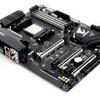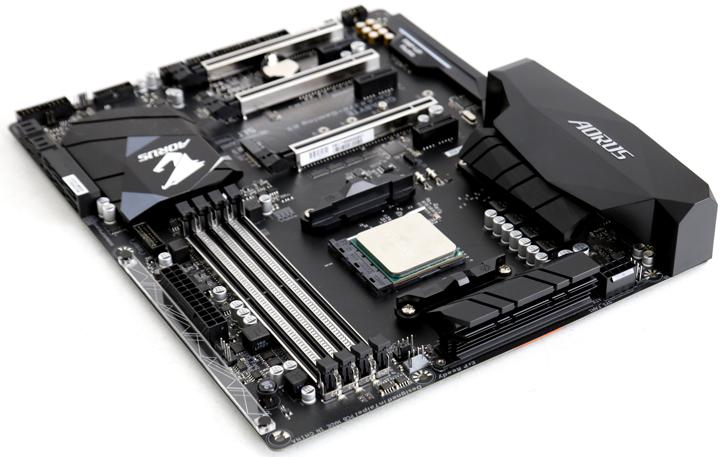Introduction
Aorus AX370 Gaming K5
Gigabyte's Top Of The Line Ryzen Motherboard Is Dressed To Impress.
In this review we check out the Aorus AX370 Gaming K5 from Gigabyte. This motherboard is the slightly more affordable (€179) one over the Gaming 5, nad has nice and dark looks. I is a a lovely match for any Ryzen series 5 or 7 processor. The X370 motherboard series are positioned in the high-end Ryzen motherboard spectrum. A motherboard with a dark design with gorgeous looks and some extras.
let's first re-cap: AMD has released Ryzen series 5 & 7, the product name and series for their released 8-cores (16 threads) processors. A processor series fabbed at a more efficient and optimized 14 nanometer FinFET process, rather than the 32 nm and 28 nm processes of previous AMD FX CPUs and AMD APUs, respectively. AMD's processors and APUs over the years have run their course really, for the gamer and more mainstream PC aficionado the older FX and APU series simply lack in raw processor performance compared to what the competition has been offering. We discussed it many times in the reviews, but if you compared an Intel processor core and an AMD processor core and clocked them at the very same frequency, Intel was almost half faster. The effect of that phenomenon showed in the less optimized and threaded applications, many games are a good example here. Ryzen series 5 likely is best matched with B350 (a little more vlaue) and Series 7 for the X370 motherboards as it is a high-end desktop (HEDT) product series. Before we start-up the review, there has been a lot of chatter on the web on 1080p game performance, CCX interlink latency and bandwidth and/or clock frequencies being responsible and so on. The fact is that week after week Ryzen processor performance has been increasing thanks to BIOS updates and software optimizations. Pair it with good and reasonably fast memory (say 2933 MHz) and you will have a a nice value processor. Many of you have been following the news on memory latency. Newer BIOS (AGESA 1006 and upwards based firmware) update ensures better performance and takes a notch of memory latency. We have been testing with this update and can confirm a drop in that memory latency and thus the overall performance. We'll show you that later on in the article.
So for Ryzen, you probably want a high-end / enthusiast class chipset with lots of features and tweaking options, this will be the X370 chipset that went along with the launch of the processor series release. X370 will give home to the new socket AM4 and will provide DDR4 memory support (as well as all other modern usual suspects like USB 3.1 gen 2, SATA Express, as well as NVMe protocol based M.2 support and surely PCI-Express Gen 3.0. For Socket AM4 following chipsets will be released: X370, B350, A320, X300 and A300. X370 is the more high-end series.
Gigabyte offers the Aorus AX370 Gaming 5 (€209) and the K5 (€179), both have different looks and some price and spec differences. The K5 actually is a good 20 to 30 bucks cheaper but has been trimmed down a bit as you wil get just one Gigabit ethernet jack, the K5 has less USB 3.1 ports and offers lesses tweaking options for RAM and processor opposed to the Gaming 5. Ergo, the K5 is the more afforable model. Next to that it comes in all black as well, making it (in my opinion) the nicer looking product (taste differs of course). This board includes support for M.2-NVMe SSDs, USB 3.1 as well as an enhanced audio solution based on the Realtek 1220 codec. The Aorus AX370 Gaming K5 supports two-way SLI and CrossFireX configs split between its main PCI Express x16 slots. The PCIe slots have reinforcement to withstand the weight of high-end cards. Ethernet jacks wise you get one Gigabit jack from intel (yes that K in the naming made you wonder if it had a KillerNIC eh?). Overall we have lots to talk about, let’s start up the review.


